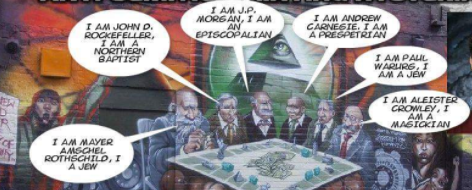From the Daily Mail:
Freelance demonstrators protesting against Brexit were paid thousands of pounds by an organisation linked to Max Mosley, it emerged yesterday.
The campaigners, from a group called the Fair Vote Project, were hired to increase support for a second EU referendum during a protest in Parliament Square.
But it has emerged the group received a £25,000 donation from an organisation called Byline Festival in which Mr Mosley, the former F1 owner accused of printing a racist leaflet [in 1961], holds shares.
The obvious implication in the first two paragraphs is that the protest was a concocted stunt involving fake “protestors for hire” rather than being a genuine expression of a point of view, and that Mosley was behind it.
However, this initial impression is not substantiated by subsequent text further down the page:
[The Fair Vote Project] is reported to have hired up to 30 people to target thousands travelling to work to convince them of the need for a second referendum.
The teams, armed with megaphones and placards handed out leaflets in Leeds, Manchester, Birmingham and London. They urged people to join a protest in Parliament Square to call for a second and ‘fair’ vote.
This is advertising ahead of the protest, not something that happened “during” it, as implied above. Further, there is now a significant discrepancy when compared with the start of the article: first, we were told that Byline had “hired” the Fair Vote Project; now, it is explained that the Fair Vote Project hired someone else.
This last point probably reflects the fact that the article is a hurried re-write and abridgement of a piece that appeared in the Daily Telegraph, which was itself less than clear. Here’s an extract from the Telegraph version:
Freelance flash mobs have been paid thousands of pounds by a company linked to Max Mosley to target commuters at major cities to drum up support for a demonstration calling for a second EU referendum, The Telegraph can reveal.
The Fair Vote Project, founded by a consultant who worked for the anti-Brexit group Best for Britain that was set up by prominent Remain campaigner Gina Miller and part funded by George Soros, hired up to 30 people to target thousands of people travelling to work.
…The Telegraph has established that the Fair Vote Project received £25,000 funding from organisers of Byline Festival, a company in which Mr Mosley, the son of the British fascist leader Sir Oswald Mosley [who died in 1980], hold shares.
…Peter Jukes, a director of BylineFest and its sister company Byline Media, said Mr Mosley owned a total of four percent in those companies, worth around £40,000. He is one of a about 13 investors.
As for the hiring, Fair Vote’s Kyle Taylor
…said his company had paid the events specialists, Coalition, £3,066 to help with “event management and safety” at the “emergency rally” in London.
That fee included paying the hired hands, freelancers Coalition hires for such events, £60 plus £10 travel expenses to leaflet and shout slogans through the megaphone from 6am to 10am in the four cities.
This clarifies that although the Fair Vote Project may have received £25,000 from Byline, only a fraction of that amount was used to promote the rally via a third party.
The emphasis on Max Mosley in both articles is obviously overegged and polemical. To say that the Fair Vote Project is “linked” to Mosley implies communication between them, and that Mosley has a direct and active interest in Fair Vote’s activities. In fact, though, Mosley is just one shareholder in Byline, and he paid no part in the decision to provide financial support to Fair Vote:
“He would have been unaware of the £25,000 invested and may even be a Brexiter,” Mr Jukes, 57, said.
Certainly, another figure associated with the Byline Festival, John Cleese, is pro-Brexit.
The polemical and distorted reporting above reflects not just the two newspapers’ support for Brexit, but also a pre-existing hostility against Byline and Peter Jukes over criticism of press practices in the UK and support for Hacked Off. Both papers previously targeted Byline after the Byline website wrote about John Whittingale, as I discussed here.
Filed under: Uncategorized | Leave a comment »




